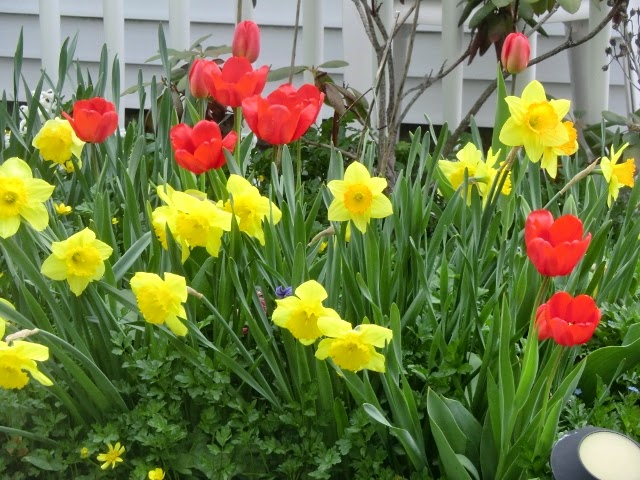Today, it rained all day. It seemed dreary but, on the other hand, the rain was a welcome sight. Small shoots are popping out of the ground that will grow to be lovely early spring flowers. All of our spring flowers are delayed because of the seemingly endless and excruciatingly cold winter.
I admit that I wasn’t too thrilled about the rain. When there are abrupt changes in the barometric pressure, I tend to get sinus headaches, and, for sure, I had an annoying one yesterday. The rain came today. It is nourishing the earth, and that is all good.
Now that it is April, I am looking forward to getting back to my little gardening business. Mostly, what I will do at first will be cleanup in flower beds. This includes turning the soil, once the soil is not too wet. It’s not a good idea to work the soil when it is saturated with water.
Here are some suggestions for the start of a new gardening season:
Pruning: Lots of people have asked when it is OK to prune their shrubbery. It depends on the shrubbery. Shrubbery that blooms in the springtime should be pruned after they have flowered. This includes forsythia and lilacs. If you prune them too early, you risk chopping off the buds and getting no flowers, which would be sad indeed. Forsythia is a cheerful yellow and lilacs are pretty and smell good. Azaleas, also, should not be pruned too early. Where I live, however, azaleas won’t grow too well. Azaleas need acidic soil, and you’ll need to amend the soil a great deal to get that acidic soil. Adding sulfur or ferrous sulfate will make the soil more acidic, which will help the azaleas grow better. Another approach to plants that don’t grow well in the soil that you already have is to use raised beds.
Shrubbery that flowers in the summer can be pruned early in the spring. That will actually encourage growth, which is a good thing at the right time. That’s why you should avoid pruning in the autumn. You do not want to encourage growth when the plant is getting ready to go into winter dormancy.
Planting: Somewhere in your garden space, try to plant things that are native to your region. Here in Western New York, native plants include wild geranium, purple cone flower, butterfly milkweed, black eyed Susan, and Eastern cone flower, among others. Native plants attract pollinators, which you will want in your garden, especially if you have something that needs pollinating, such as apple or pear trees. Milkweed attracts Monarch butterflies, which make a delightful sight in any garden.
Gardening season is coming! And with it, you can surround yourself with beautiful colors and aromas. Enjoy… and I’ll try to follow up with a few more gardening topics later this month.

I am not much of a gardener, however, the property I recently moved into had an avid gardener and I need to get better at the upkeep!
Oh… And the rain? I LOVE sitting on the porch during a good downpour!
Thanks for sharing!
Alice, I'm visiting from the UBC. Gardening is one of my favorite things. I have a Feng Shui Garden at one end of my home, with both ornamentals and edibles, which serves as an energy engine for the home and us. And I love the sound of rain and the smell of Arizona plants after it rains. Thanks for talking about gardening. Great post!
thank you for your tips!
I really need to get outside with my pruning shears, the weather is turning spring-like finally and I need to get some of my plants in order 🙂
I hope you have a wonderful time during the rest of A to Z!
Sylvia van Bruggen @ Playful Creative
Although I don't garden, I'm excited to see Spring come. I will love seeing what other people put in their gardens.